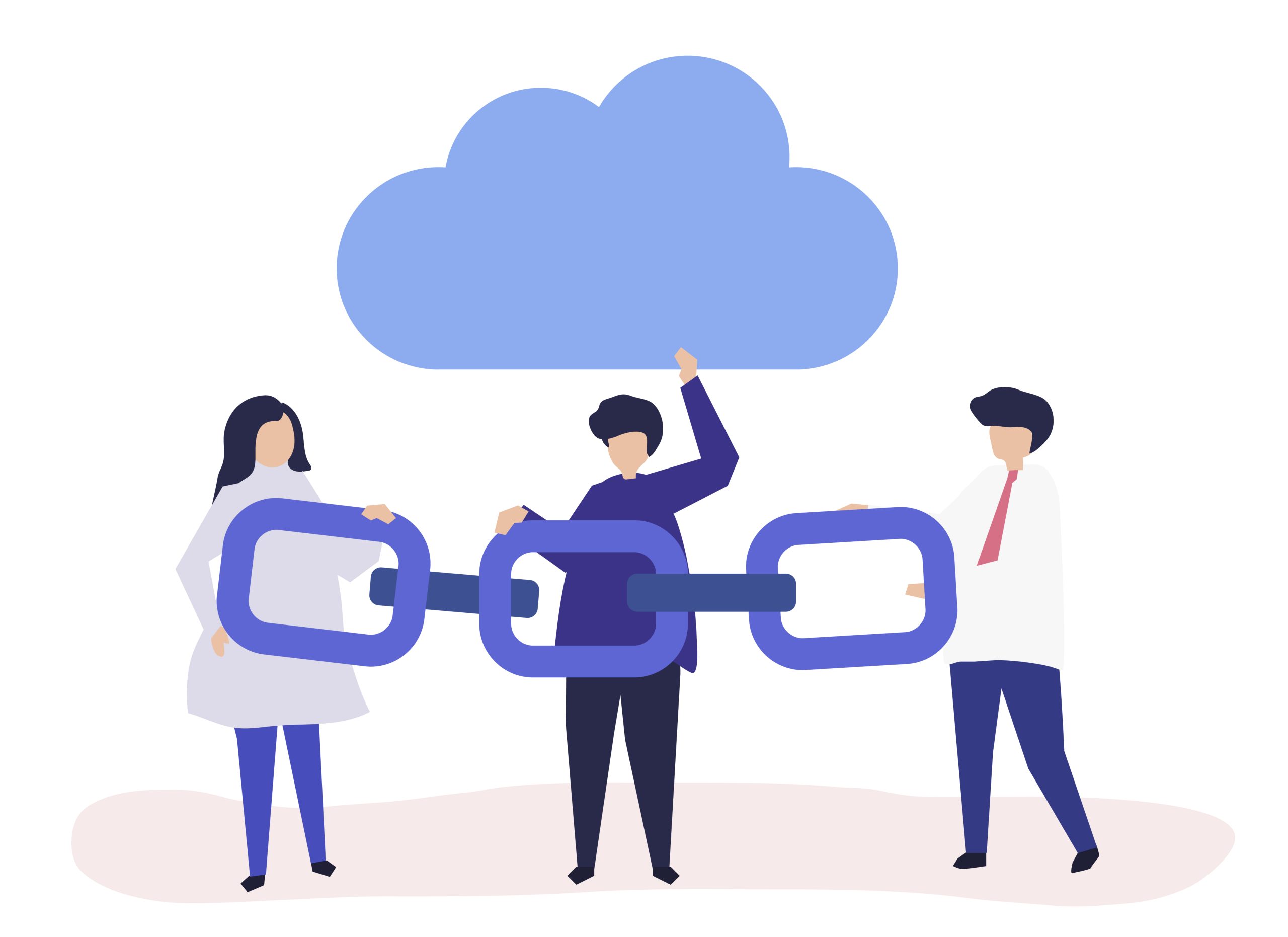Link building is an important term in SEO and plays an important role in search ranking as an important factor. link building has two parts and there are two parts one of Internal link building and one external link building. Internal link building emerges as the most important technique for enhancing website visibility, improving organic rankings, and providing a seamless user experience. Internal links are the connections between different pages within a website, creating a web of interconnected content that facilitates navigation and improves the overall structure of a website. Knowing about the importance and benefits of internal link-building is crucial for website owners, content creators, and SEO professionals alike.
In this blog You know about everything about internal link building, exploring its significance in SEO strategies and uncovering the myriad benefits it brings. From boosting organic rankings to increasing page authority and user engagement, we will uncover the secrets to implementing successful internal linking strategies that drive results.
Importance and Benefits of Internal Link Building
Internal link-building plays an important role in shaping the structure and relevance of a website. By strategically linking pages and content together, you create a network of interconnected information that search engines can navigate and index more effectively.

1. Enhanced Crawling and Indexing
Internal links serve as pathways that search engine bots can follow to discover and index your web pages. When search engines encounter internal links, they can easily navigate from one page to another, ensuring that all your important content is indexed and available for search queries. By establishing a clear internal linking structure, you can help search engines crawl and index your website more efficiently, ensuring that your valuable content doesn’t go unnoticed.
2. Improved Organic Rankings
Internal link building contributes to improved organic rankings by signaling the relevance and importance of specific pages within your website. When you interlink related content, search engines interpret these connections as a strong indication that the linked pages are valuable and deserve higher visibility. As a result, the linked pages gain more authority, ultimately boosting their rankings in search engine results pages (SERPs). By incorporating relevant and contextually appropriate internal links, you can enhance your website’s SEO efforts and improve its visibility in search engine rankings.
3. Enhanced User Experience and Navigation
Internal links also greatly impact the user experience on your website. By guiding users from one page to another, you can provide them with a seamless and intuitive browsing experience. When users encounter relevant internal links while reading an article or exploring a product, they are more likely to engage with the linked content, prolonging their stay on your website. Internal links help users discover related or relevant information, keeping them engaged and satisfied with your website’s content.
4. Increased Page Authority
Internal link building can effectively distribute authority and page ranking power throughout your website. When you link to important pages from other relevant pages, you pass on a portion of their authority, reinforcing their importance in the eyes of search engines. By strategically interlinking your content, you can strengthen the overall authority of your website, signaling its credibility and relevance to search engines.
5. Facilitates Content Discovery
Internal links are an excellent tool for content discovery. By incorporating well-placed links within your content, you can guide users to related articles, products, or resources that they might find valuable. This not only encourages users to explore more of your website but also exposes them to additional opportunities for engagement, such as subscribing to a newsletter, making a purchase, or sharing your content with others.
6. Efficiently Manages Link Equity
Internal link building enables you to manage the flow of link equity within your website more effectively. Link equity refers to the value and authority passed from one page to another through hyperlinks. By strategically placing internal links, you can direct the flow of link equity to important pages within your website, boosting their visibility and authority. This ensures that your most valuable content receives the maximum benefit from the link equity generated across your site.
7. Establishes Information Hierarchy
Internal link building allows you to establish a clear information hierarchy within your website. By linking to relevant and supporting content, you can guide users through a structured journey, presenting information in a logical and organized manner. This helps users understand the context, relationships, and relevance of different pages, allowing them to navigate your website more easily and find the information they need without confusion.
8. Strengthens Keyword Optimization
Internal links provide an excellent opportunity to strengthen keyword optimization within your website. By using relevant anchor text in your internal links, you can signal to search engines the topic and relevance of the linked page. This helps search engines understand the content of your pages more accurately, ultimately contributing to improved rankings for your targeted keywords. Remember to use natural and contextual anchor text that accurately reflects the content of the linked page.
9. Decreases Bounce Rate
Internal link building can reduce bounce rates on your website. When users encounter relevant internal links while reading a page, they are more likely to click through and explore additional content, rather than bouncing back to the search results. By providing them with easy access to related information, you can capture their interest and encourage them to spend more time on your site, reducing bounce rates and increasing overall user engagement.
10. Supports Site Architecture
Internal link building is crucial for maintaining a strong and coherent site architecture. By interlinking related pages, you establish a logical and interconnected structure that allows both users and search engines to navigate your website seamlessly. A well-organized and easily navigable site architecture enhances the user experience, ensures that all pages are accessible, and improves the overall crawl ability of your website by search engines.
Frequently Asked Questions (FAQs) About Internal Linking
1. Why is internal linking important for SEO?
Internal link building is important for SEO because it enhances website visibility, improves organic rankings, and helps search engines discover and index your content more effectively. By strategically linking related pages, you can signal their relevance and importance, ultimately boosting their rankings in search engine results pages.
2. How many internal links should I include in my content?
The number of internal links you should include in your content depends on the length and depth of your content. It’s important to maintain a balance and avoid excessive internal linking, as it can appear spammy. Include internal links where they provide value and enhance the user experience, typically aiming for 2-5 internal links per 500 words of content.
3. Should I always use keyword-rich anchor text in my internal links?
While using keyword-rich anchor text in your internal links can be beneficial for SEO, it’s essential to maintain a natural and user-friendly approach. Don’t over-optimize anchor text by stuffing it with keywords. Instead, use descriptive and contextually relevant anchor text that accurately represents the content of the linked page.
4. Can internal link building help with website navigation?
Yes, internal link building plays a crucial role in improving website navigation. By strategically placing internal links throughout your content, you can guide users to related pages and provide them with a seamless browsing experience. Internal links facilitate content discovery, allowing users to navigate your website more easily and find the information they’re seeking.
5. Should I only focus on internal links or also acquire external backlinks?
Both internal links and external backlinks are important for a comprehensive SEO strategy. Internal links help improve the structure, relevance, and visibility of your website, while external backlinks from authoritative sources indicate the credibility and popularity of your site. It’s essential to strike a balance between internal and external linking efforts to maximize the benefits of your SEO strategy.
6. How can I measure the effectiveness of my internal link-building efforts?
To measure the effectiveness of your internal link-building efforts, you can use various SEO analytics tools. Monitor key metrics such as organic traffic, page rankings, and user engagement metrics like time on page and bounce rate. Analyze how these metrics change over time and correlate them with your internal link-building activities to assess the impact on your website’s performance.
Conclusion
Internal link-building is an indispensable component of any successful SEO strategy. By understanding its importance and harnessing its benefits, you can improve your website’s visibility, boost organic rankings, and create a seamless user experience. From enhanced crawling and indexing to increased page authority and improved navigation, internal link building offers a multitude of advantages that directly impact your website’s performance in search engine rankings.
































































